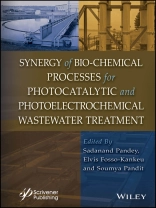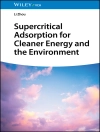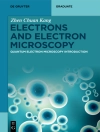The concept of photoelectrochemistry applied to microbial fuel cells could be the future of sustainable wastewater treatment and for hydrogen recovery as a valuable energy source.
With the increase of recalcitrant organic pollutants in industrial wastewater, the need for a sustainable bio-electrochemical process has become pressing in order to ensure that treatment processes are coupled with some beneficiation advantages. Microbial fuel cells combine wastewater treatment and biological power generation. However, the resistance of these organic pollutants to biological degradation requires further adjustment of the system to improve sustainability through maximization of energy production.
Solar energy conversion using photocatalysis has drawn huge attention for its potential to provide renewable and sustainable energy. Furthermore, it might be the solution to serious environmental and energy-related problems. It has been widely understood for several years that the top global issues today are concerned with securing a clean supply of water and ensuring a reasonable price for clean energy. Researchers are studying advanced materials and processes to produce clean, renewable hydrogen fuel through photocatalytic and photoelectrocatalytic water splitting, as well as to reduce carbon dioxide from the air into fuels through photocatalysis. Limited progress is occurring in these areas.
The purpose of this book is to comprehensively cover the evolvement in the conceptualization and application of photocatalytic fuel cells, as well as make a critical assessment of the contribution in the field of sustainable wastewater treatment and renewable energy production.
This book contains nine specialized chapters that provide comprehensive coverage of the design of photocatalytic fuel cells and their applications, including environmental remediation, chemical synthesis, green energy generation, model simulation for scaling up processes and implementation, and most importantly maximization of hydrogen evolution, recovery, and applications.
Audience
A wide audience of academics, industrial researchers, and graduate students working in heterogeneous photocatalysis, fuel cells, sustainable chemistry, nanotechnology, chemical engineering, environmental protection, and surfaces and interfaces, will find this book useful. The book is also important for professionals, namely environmental managers, water treatment plants managers and operators, water authorities, government regulatory bodies officers, and environmentalists.
Inhaltsverzeichnis
1 A Comprehensive Review of Graphitic Carbon Nitride (gcn/gc 3 N 4) as a Promising Photocatalyst 1
Pragna M. Shivannavar, Chiranth Srirangapatna Puttasrinivasa, Sharmila Suresh, Charan Kumar Kachintaya, Lingaraju Honnur Gurusiddappa, Supreeth Mohan Kumar and Shankramma Kalikeri
1.1 Introduction 2
1.2 GCN as a Photocatalyst 3
1.3 GCN Modification to Act as a Photocatalyst 8
1.4 GCN-Based Nanocomposites as a Photocatalyst 12
1.5 Conclusion 18
1.6 Future Perspectives 19
References 19
2 Nanocomposites for Pharmaceutical Waste Degradation: A Remediation Tool 27
Sharmila Suresh, Pragna M. Shivannanavar, Ravikumara Moodalakoppalu Yogarajachari, Shankramma Kalikeri, Charan Kumar Kachintaya and Lingaraju Honnur Gurusiddappa
2.1 Introduction 28
2.2 Pharmaceutical Waste Degradation 29
2.3 Conclusion 42
2.4 Future Perspectives 42
References 43
3 Nanostructure Metal Sulfides for Photocatalytic Water Remediation 49
Shuvendu Tripathy, Medha Kiran Patel, Ipsita Bose, Soumya Pandit and Santimoy Khilari
3.1 Introduction 50
3.2 General Working Principle and Important Parameters for Photocatalysis on Metal Sulfide 54
3.3 Different Types of Metal Sulfide Photocatalysts: Monometallic Sulfides, Multimetallic Metal Sulfides, and Metal Sulfide Heterostructure 55
3.3.1 Monometallic Sulfides 56
3.3.2 Multimetallic Sulfides 56
3.3.3 Metal Sulfide Heterostructures 56
3.4 Copper Sulfide as Photocatalyst for Water Remediation 56
3.5 Zn S as a Photocatalyst for Water Treatment 60
3.6 Fe S as a Photocatalyst for Water Remediation 64
3.7 Conclusion 68
References 68
4 Metal–Organic Framework as Potential Candidates for Photo-Electrocatalysis 73
Isha Soni and Gururaj Kudur Jayaprakash
4.1 Introduction 73
4.2 Photocatalysis 74
4.2.1 Photocatalyst 76
4.3 Electrocatalysis 80
4.3.1 Electrocatalyst 82
4.4 Photo-Electrocatalysis 83
4.4.1 Photo-Electrocatalyst 85
4.4.2 MOFs 86
4.4.2.1 Sensing and Degradation of Pollutants 88
4.4.2.2 Co 2 Reduction 91
4.5 Comparison of Photocatalysis, Electrocatalysis, and Photo-Electrocatalysis 95
4.6 Conclusion and Future Aspects 96
References 98
5 A Review on Photocatalytic Fuel Cell (PFC) for Sustainable Wastewater Treatment and Renewable Energy Production 103
Soumasree Chatterjee and Elvis Fosso-Kankeu
5.1 Introduction 104
5.2 Photocatalysis 105
5.2.1 Theory 105
5.2.2 Mechanism 106
5.3 Photocatalytic Fuel Cell 107
5.3.1 Theory 107
5.3.2 Features 108
5.3.3 Working Principle 109
5.3.4 Design 111
5.3.4.1 Single-Photoelectrode PFC 112
5.3.4.2 Dual-Photoelectrode PFC 113
5.3.5 Electrodes 117
5.3.5.1 Photoanode 117
5.3.5.2 Photocathode 118
5.3.5.3 Wastewater Treatment and Pollutant Degradation 119
5.3.6 Electricity Generation 129
5.4 Conclusion 129
Declaration of Interest 130
References 130
6 Remediation of Wastewater through Photo-Induced Catalytic and Electrochemical Hydrogen Production 139
Ramgopal Tiwari, Ajayrajsinh R. Zala and Premlata Kumari
List of Abbreviations 140
6.1 Introduction 140
6.2 Mechanism of Photocatalysis 142
6.3 Homogeneous and Heterogeneous Photocatalysis 143
6.3.1 Homogeneous Photocatalysis 143
6.3.1.1 Fenton Reaction 143
6.3.2 Heterogeneous Photocatalysis 145
6.3.2.1 Photocatalytic Materials 146
6.3.2.2 Applications of Photocatalytic Processes 147
6.3.3 Photoelectrochemical Approach in Wastewater Treatment 152
6.4 Conclusion 154
6.5 Challenges and Future Aspects 154
References 155
7 Recent Advances on the Electrode Materials Used in Microbial Fuel Cell for Simultaneous Power Generation and Wastewater Treatment 161
Ankit Kumar, Soumya Pandit, Shikha Singh and Chetan Pandit
7.1 Introduction 162
7.2 Introduction to MFC 163
7.3 Electrode Material 164
7.4 Anode Material 165
7.4.1 The Traditional Carbon-Based Anode Material 165
7.4.1.1 Granular Carbon 166
7.4.1.2 Stainless Steel 168
7.5 Carbon Nanotubes (CNTs) and Composite Anode Material 168
7.5.1 Graphene 173
7.5.2 Other Methods for Anode Surface Modification 176
7.6 Cathode Material 179
7.6.1 Abiotic Cathode 180
7.6.2 Biocathode (Biotic Cathode) 181
7.6.3 Cathode with Pt-Based Catalyst 183
7.6.4 Cathode with Non–Pt-Based Catalyst 183
7.7 Conclusion 184
References 185
8 Extensive Use of Photocatalysis and Photoelectrochemical Methods for Wastewater Reclamation 189
Namrata Khanna, Tanushri Chatterji, Virendra Yadav, Tanya Bhagat, Shalini Sharma and Sadanand Pandey
Abbreviations 190
8.1 Introduction 191
8.2 Mechanism Describing the Photoelectrochemical Processes 192
8.3 Photoelectrocatalysis 193
8.3.1 Types of Photocatalysts 198
8.3.1.1 Metal Oxides 198
8.3.1.2 Modified or Doped Metallic Oxides 200
8.4 Applications of Modified Photocatalysts 200
8.4.1 Removing Organic Dyes Present in Wastewater 200
8.4.2 Removal of Emerging Contaminants (ECs) from Wastewater 202
8.4.3 Photocatalytic Degradation of Phenols 203
8.4.4 Anti-Microbial Efficacy of Treatment by Photocatalysts 206
8.4.5 Innovative Catalysts for Removal of Herbicides 211
8.5 Solar/Photoelectro-Fenton Process 215
8.6 Photocatalytic Fuel Cells (PFCs) and Their Relevance in Minimizing Use of Electrical Procedures 218
8.7 Photo Electro Peroxone Technique 219
8.8 Treatment of Real Wastewater Treatment by Photoelectrochemical Processes 220
8.8.1 Treatment of Landfill 220
8.8.2 Oil Mill Effluents 222
8.8.3 Pharmaceutical Waste 222
8.8.4 Textile Industry 223
8.8.5 Tannery Effluents 224
8.9 Trends and Conclusion 224
References 225
9 Solar-Driven Photoelectrochemical Technologies for Wastewater Treatment and Green Hydrogen Production 245
Mohamed Mahmoud
9.1 Introduction 246
9.2 Photoelectrochemical Catalysts 248
9.3 Photoelectrochemical Cell Design and Operation for Wastewater Treatment 249
9.4 Application of Photoelectrochemical Systems for Real Wastewater Treatment 251
9.5 Hydrogen Production During Photoelectrochemical Treatment of Wastewater 254
9.6 Conclusions 256
Acknowledgments 257
References 257
Index 265
Über den Autor
Sadanand Pandey, Ph D, is a professor in the School of Bioengineering and Food Technology, Faculty of Applied Sciences and Biotechnology, Shoolini University, India. He was a Kothari fellow at the prestigious Indian Institute of Science (2011–2013) and NRF scientist at the University of Johannesburg, South Africa (2014–2018). He has published more than 100 SCI Journal articles, many book chapters, and several contributions to scientific meetings and co-edited books. His research activities span the disciplines of polymer chemistry, materials science, nanotechnology, and sustainable and advanced materials.
Elvis Fosso-Kankeu, Ph D, is a professor in the Department of Metallurgy at the University of Johannesburg, South Africa. He has published more than 250 papers including journal articles, books, book chapters and conference proceeding papers. He has won several research awards including the National Science and Technology Forum Award in South Africa. His research focuses on the hydrometallurgical extraction of metal from solid phases, prediction of pollutants dispersion from industrial areas, and development of effective and sustainable methods for the removal of inorganic and organic pollutants from polluted water.
Soumya Pandit, Ph D, is a senior assistant professor at Sharda University, Greater Noida, Delhi, India. He pursued his doctoral studies from the Department of Biotechnology, Indian Institute of Technology, Kharagpur in 2015. He has authored more than 70 research and review papers in peer-reviewed journals, and his research areas include microbial electrochemical systems for bioenergy harvesting, bacterial biofilm and biofouling study, biohythane production, microalgal biomass production for biofuel, nanomaterial synthesis and application in bioenergy harvesting and biofouling mitigation.












